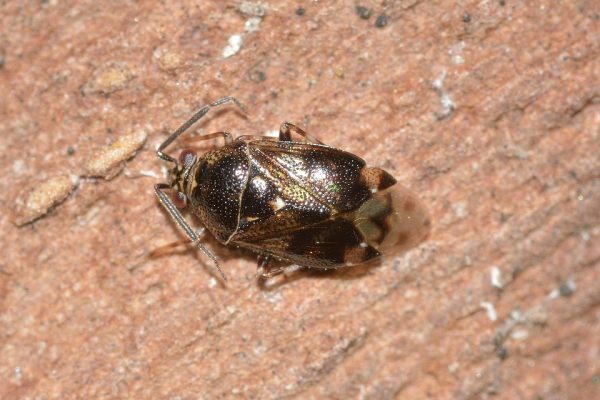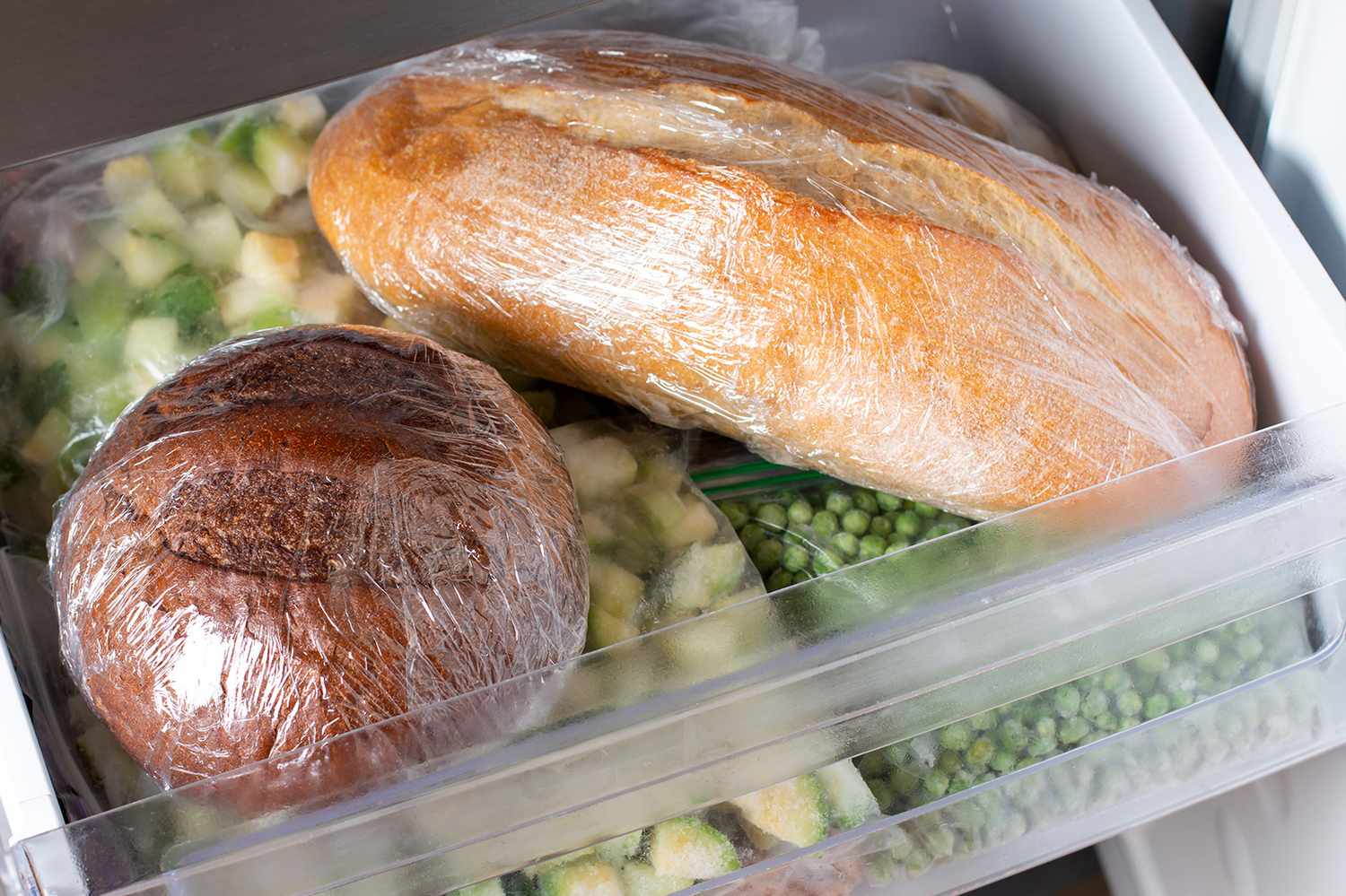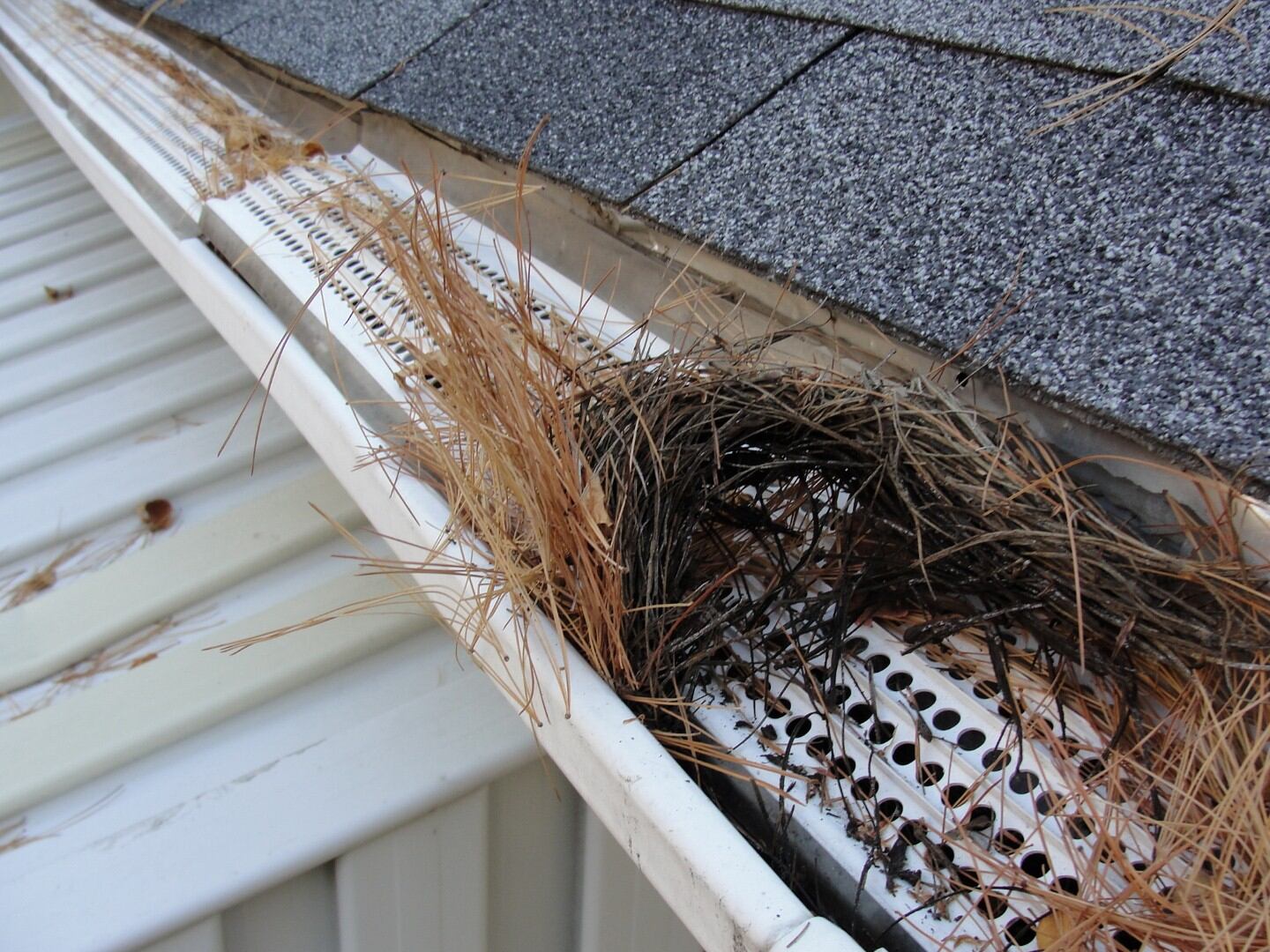

Articles
How To Store Rice To Prevent Bugs
Modified: January 19, 2024
Learn how to store rice properly to keep it free from bugs and ensure its freshness. Read our informative articles for tips and tricks on preventing bug infestation in your rice storage.
(Many of the links in this article redirect to a specific reviewed product. Your purchase of these products through affiliate links helps to generate commission for Storables.com, at no extra cost. Learn more)
Introduction
Storing rice properly is crucial to ensure its quality and prevent infestations by bugs. Rice is a staple food for billions of people around the world, providing essential nutrients and energy. However, improper storage can lead to the growth of insects and pests that can contaminate the rice and render it unusable. In this article, we will explore the importance of storing rice correctly and provide practical tips on preventing bugs in stored rice.
Proper rice storage not only helps maintain its nutritional value but also ensures its long shelf life. By preventing bugs from infesting the stored rice, you can avoid the loss of your food supply and reduce the risk of consuming contaminated grains. Understanding the common bugs that are attracted to rice and learning how to prevent infestations are essential skills for anyone who wants to store rice effectively.
Fortunately, with a little knowledge and a few preventive measures, you can keep your rice fresh, bug-free, and ready to use for an extended period. In the following sections, we will delve into the details of common rice bugs, steps to prevent bug infestations, and proper cleaning and storage techniques to ensure your rice remains safe and edible.
By implementing the strategies discussed in this article, you can say goodbye to the headache of discovering bugs in your stored rice and enjoy the peace of mind that comes with knowing your food supply is well-protected. So, let’s dive in and learn how to store rice properly to prevent bugs.
Key Takeaways:
- Properly storing rice is crucial to maintain its quality, prevent bug infestations, and ensure long-term freshness. Understanding common rice bugs and implementing preventive measures are essential for bug-free rice storage.
- Regular inspections, proper sealing techniques, and additional protective measures are key to preventing bug infestations in stored rice. Taking preventive actions and maintaining good hygiene further safeguard the rice supply.
Read more: How To Store Flour To Prevent Bugs
Why it is important to store rice properly
Proper storage of rice is essential for several reasons. Firstly, it helps to preserve the quality and nutritional value of the rice. Rice is rich in essential vitamins, minerals, and carbohydrates that provide energy and nourishment to the body. However, when exposed to improper storage conditions, rice can deteriorate, leading to a loss of nutrients and a decrease in taste and texture.
Secondly, storing rice properly helps to prevent the growth of bugs and pests. Rice is naturally attractive to a variety of insects, such as rice weevils, flour beetles, and grain moths. These bugs can find their way into bags or containers of rice, causing contamination and making it unfit for consumption. Consuming rice infested with bugs can lead to food poisoning or other health issues.
Another reason to store rice properly is to prevent moisture and humidity from affecting its quality. Rice is sensitive to moisture and can easily absorb excess water, leading to a loss of texture and taste. Additionally, moisture can create an ideal environment for mold and fungus growth, which can further contaminate the rice and pose health risks.
Furthermore, proper rice storage can help to extend its shelf life. Rice has a long storage life if kept in optimal conditions. However, if stored improperly, it may become stale, lose its flavor, and even develop an unpleasant odor. By following proper storage techniques, you can maximize the shelf life of your rice, ensuring that it remains fresh and suitable for consumption for a longer period.
Lastly, storing rice properly can save you money and reduce food waste. When rice is stored incorrectly and becomes infested with bugs or spoiled due to moisture, you may need to discard it, resulting in wasted food and money. By taking the necessary precautions and implementing proper storage practices, you can avoid such losses and make the most out of your rice supply.
Overall, storing rice properly is crucial to maintain its quality, prevent bug infestations, preserve its taste and texture, extend its shelf life, and minimize food waste. It ensures that your rice remains safe, nutritious, and enjoyable to consume. In the next sections, we will delve into the details of common rice bugs and provide practical steps to prevent their infestations in stored rice.
Understanding common rice bugs
Before we dive into the steps to prevent bug infestations in stored rice, it’s important to familiarize ourselves with the common bugs that are attracted to rice. By understanding their behavior and characteristics, we can better protect our rice supply and take appropriate preventive measures.
One of the most common rice bugs is the rice weevil (Sitophilus oryzae). These small insects are reddish-brown in color and have a long snout-like structure called a rostrum. Rice weevils lay their eggs inside the grains of rice, and the larvae feed on the rice while inside the kernel. As a result, infested rice is often characterized by small holes and the presence of live weevils or empty exoskeletons.
Another common bug found in stored rice is the flour beetle (Tribolium spp.). These beetles are small, brown insects with smooth bodies. They are known to infest flour, grains, and rice, and can quickly multiply in warm and humid environments. Infestations by flour beetles can result in an unpleasant odor and a floury appearance in the rice.
Grain moths, also known as Indianmeal moths (Plodia interpunctella), are another type of bugs that can infest stored rice. These moths lay their eggs on the rice grains, and the larvae feed on the rice, leaving behind silk webs and dark-colored fecal matter. Infested rice by grain moths may have a musty smell and an off-taste.
Furthermore, there are other pests that can be attracted to stored rice, such as ants, cockroaches, and rodents. These pests are not only interested in the rice grains but also seek shelter and food sources in the storage area. Their presence can further contaminate the rice and create an unsanitary environment.
It’s worth noting that these bugs can be present in rice bought from stores or can find their way into your storage containers if not properly sealed. Therefore, even if the rice is bug-free when purchased, it’s crucial to implement preventive measures to keep the bugs away and maintain the rice’s quality and safety.
Now that we have a better understanding of the common rice bugs, let’s move on to the practical steps you can take to prevent bug infestations and ensure your stored rice remains clean and safe for consumption.
Steps to prevent bugs in stored rice
Preventing bug infestations in stored rice requires a combination of proper cleaning, storage techniques, and regular inspections. By following these steps, you can minimize the risk of bugs contaminating your rice and ensure its long-term freshness.
- Clean and prepare the storage area: Before storing rice, make sure to clean the storage area thoroughly. Remove any debris or food spills that may attract bugs. Vacuum or sweep the area to eliminate any hidden eggs or larvae. Additionally, ensure that the storage area is dry and free from excess humidity, as bugs thrive in moist conditions.
- Choose the right storage containers: Opt for airtight containers made of plastic, glass, or metal to store your rice. These containers should have tight-fitting lids to seal out bugs and prevent moisture from entering. Avoid using containers that are already infested or have cracks, as they may provide entry points for bugs.
- Properly seal the containers: Once you have filled the containers with rice, ensure that they are tightly sealed. This will create a barrier that prevents bugs from entering and reduces the risk of moisture absorption. Use adhesive tape or rubber bands to seal any gaps or openings in the lids.
- Add protective measures: To further safeguard your rice, consider adding additional protective measures. Place a bay leaf or a few cloves in each container, as the strong aroma can repel bugs. Alternatively, you can use food-grade diatomaceous earth, a natural insecticide, by sprinkling a small amount on top of the rice before sealing the containers.
- Inspect stored rice regularly: Regularly inspect your stored rice for any signs of bug infestation. Look for small holes, live bugs, webbing, or any unusual odors. If any signs are detected, separate the infested rice from the rest and dispose of it immediately to prevent the spread of bugs.
- Take preventive actions to avoid infestations: Alongside proper storage techniques, there are a few preventive actions you can take to minimize the risk of bug infestations. Avoid storing rice near areas prone to pests, such as garbage bins or pet food. Additionally, practice good hygiene by washing your hands before handling rice or containers, as bugs can be inadvertently introduced.
By following these steps, you can greatly reduce the chances of bugs infesting your stored rice. Remember that prevention is key, so it’s important to implement these measures from the moment you bring rice into your home and continue to practice them regularly.
Now that you have learned how to prevent bugs in stored rice, let’s move on to the next section, where we will explore in detail the process of cleaning and preparing the storage area for rice storage.
Cleaning and preparing the storage area
Before storing rice, it’s crucial to clean and prepare the storage area properly. This step ensures that the environment is free from potential contaminants and creates an optimal space for storing your rice without attracting bugs or pests. Follow these steps to effectively clean and prepare the storage area:
- Remove existing items: Clear out the storage area and remove any existing items or debris. This includes removing any old rice or grains that may be present. By starting with a clean slate, you reduce the risk of transferring bugs or contaminants to the new batch of rice.
- Vacuum and sweep the area: Thoroughly vacuum or sweep the storage area to remove any dirt, dust, or food particles that can attract bugs. Pay attention to corners, crevices, and hard-to-reach areas where debris may accumulate. Use a hose attachment or a small brush to clean any cracks or crevices where pests could hide.
- Wipe down surfaces: Use a damp cloth or sponge to wipe down all surfaces in the storage area, including shelves, walls, and ceilings. This helps remove any residual dirt or grime that may serve as a food source or breeding ground for bugs. If necessary, use a mild detergent to clean stubborn stains or sticky residue.
- Check for moisture: Assess the moisture levels in the storage area. Excess humidity can create an ideal environment for mold, fungus, and bug infestations. Use a hygrometer or moisture meter to measure the humidity levels. Aim for a humidity level below 60% to prevent the growth of bugs and maintain the quality of the stored rice.
- Ensure adequate ventilation: Proper ventilation is essential in the storage area to prevent the accumulation of moisture and stagnant air. If necessary, install fans or open windows to promote air circulation. This helps to keep the storage area dry and creates an inhospitable environment for bugs.
- Consider pest control: If you have had previous bug issues or live in an area prone to pests, you may want to consider implementing pest control measures. Consult with a professional pest control service to ensure safe and effective methods for keeping bugs away from your storage area.
By thoroughly cleaning and preparing the storage area, you create a clean and pest-resistant environment for storing rice. This step sets the foundation for effective bug prevention and helps maintain the quality of your rice over time.
In the next section, we will discuss the importance of choosing the right storage containers for your rice and the best practices for sealing them to prevent bugs from entering.
Read more: How To Store Sugar To Prevent Bugs
Choosing the right storage containers
When it comes to storing rice, selecting the right containers is essential for preserving its quality and keeping bugs at bay. The ideal storage containers should be durable, airtight, and resistant to pests. Here are some factors to consider when choosing the right storage containers for your rice:
- Material: Opt for containers made from food-safe materials such as plastic, glass, or metal. These materials are sturdy, non-porous, and do not react with the rice, ensuring that it remains safe for consumption. Avoid containers made of materials that may leach harmful chemicals or affect the taste and quality of the rice.
- Airtightness: Look for containers with airtight seals that can effectively prevent the entry of bugs, moisture, and air. A tight seal ensures that the rice remains fresh and reduces the risk of infestations. Check for containers with secure and leak-proof lids to maintain the integrity of the rice.
- Size: Consider the amount of rice you plan to store and choose containers that can accommodate it comfortably. It’s better to have several smaller containers rather than one large container, as this allows you to access the rice without exposing the entire quantity to air and potential contamination.
- Transparent or labeled: Opt for transparent containers or containers with clear labels to easily identify the contents. This helps you keep track of the rice types, expiration dates, and any potential signs of bug infestation. Clear containers also allow you to monitor the rice quality without having to open the containers frequently.
- Stackability: If you are storing multiple containers, consider containers that are stackable. This feature maximizes space utilization and makes it easier to organize and manage your rice storage area. Ensure that the containers are sturdy enough to withstand the weight when stacked without compromising their airtightness.
By selecting the right storage containers, you create a protective barrier between your rice and potential contaminants or pests. Airtight and durable containers help maintain the quality of the rice and prevent bug infestations, ensuring that it remains fresh and safe to consume.
In the next section, we will discuss the proper techniques for sealing your rice containers to further enhance bug prevention and protect the integrity of the stored rice.
Store rice in airtight containers to prevent bugs. Keep it in a cool, dry place away from sunlight and moisture. Consider adding a bay leaf to deter insects.
Using proper sealing techniques
Proper sealing of rice containers is crucial to prevent the entry of bugs, moisture, and air, which can compromise the quality and freshness of the stored rice. Here are some techniques to ensure effective sealing of your rice containers:
- Clean the container: Before sealing the container, make sure it is clean and free from any debris or rice particles. Wipe down the interior and exterior surfaces with a clean cloth or sponge to remove any lingering residue that may attract bugs.
- Fill the container appropriately: Avoid overfilling the container, as it can make sealing difficult and increase the chances of rice getting caught in the lid or spilling out. Fill the container up to about 80% of its capacity to leave enough space for the rice to move freely when you handle and scoop it.
- Ensure a dry environment: Moisture is the enemy when it comes to storing rice. Before sealing the containers, make sure the rice is completely dry to prevent mold or fungus growth. If the rice feels slightly moist, spread it out on a clean, dry surface and allow it to air-dry before transferring it to the container.
- Use proper sealing methods: Depending on the container type, there are several effective sealing methods you can employ. For containers with screw-on lids or clamping mechanisms, make sure to tighten them securely until you feel resistance. Containers with snap-on lids should produce an audible snap when properly sealed.
- Consider using additional means of sealing: For added protection, consider wrapping the container lid with plastic wrap or placing a layer of plastic wrap inside the lid before sealing. This creates an extra barrier against bugs and moisture. Another option is to use adhesive tape to seal any gaps or openings in the lid.
- Label the container: Don’t forget to label the container with the type of rice, the date of storage, and any other relevant information. This helps you track the freshness of the rice and ensures that the oldest rice is consumed first. Use a permanent marker or labels that adhere well to the container’s surface.
By utilizing these sealing techniques, you can significantly reduce the risk of bug infestations and maintain the quality of your stored rice. Remember to always check the containers periodically to ensure the seals remain intact and to address any signs of damage or loosening.
In the next section, we will explore additional protective measures you can take to further safeguard your stored rice from bugs and maintain its freshness.
Adding protective measures
In addition to proper cleaning, storage containers, and sealing techniques, there are additional protective measures you can take to further safeguard your stored rice from bugs and maintain its freshness. These measures provide an extra layer of defense against infestations. Here are some protective measures you can consider:
- Bay leaves: Place a bay leaf or two inside each rice container. The strong aroma of bay leaves acts as a natural deterrent for bugs, helping to keep them away from the rice. This simple and cost-effective method can provide added protection against infestations.
- Cloves: Another natural repellent is cloves. Place a few whole cloves in each rice container. The pungent odor of cloves can help repel and deter bugs from approaching the rice. This method is particularly useful for those who enjoy the warm and aromatic flavor that cloves impart to the rice.
- Food-grade diatomaceous earth: Diatomaceous earth is a fine powder made from the crushed fossils of diatoms. It acts as a natural insecticide and can effectively protect stored rice from bugs. Sprinkle a small amount of food-grade diatomaceous earth on top of the rice before sealing the containers. The powder will create a barrier against bugs and absorb any moisture that may be present.
- Freezing: If you have the space and ability to do so, you can freeze your rice for a few days before storing it. Freezing kills any existing bugs or eggs that may have been present, ensuring that the rice is bug-free. However, it’s important to note that freezing may affect the texture of the rice, so it’s best suited for long-term storage or when rice will be cooked rather than used as a staple.
- Temperature control: Bugs thrive in warm environments, so maintaining a cool temperature in your storage area can discourage their growth. Aim to store your rice in a cool place away from direct sunlight and heat sources. Avoid storing rice in areas like attics or garages, as they often experience temperature fluctuations that can impact the quality of the rice.
By implementing these additional protective measures, you create a more hostile environment for bugs, minimizing their chances of infesting your stored rice. However, it’s important to note that these measures are preventive rather than foolproof. Regular inspection and maintenance of your rice storage area are still essential to catch any signs of infestation early and take appropriate action.
In the next section, we will discuss the importance of inspecting stored rice regularly and the steps you can take to ensure early detection of any bug infestations.
Inspecting stored rice regularly
Regular inspection of your stored rice is crucial to detect any signs of bug infestations early on. By conducting regular checks, you can identify and address any issues before they spread and impact the rest of your rice supply. Here are some steps you can take to ensure effective inspection:
- Visual inspection: Visually examine the containers of stored rice for any signs of bug infestations. Look for small holes or tunnels in the rice kernels, as these can indicate the presence of rice weevils or other bugs. Pay attention to the corners and bottom of the containers, as bugs tend to infest these areas first.
- Check for live bugs: Using a flashlight, inspect the rice for any live bugs crawling on or near the surface. Rice weevils and other pests are typically active during the dark hours, so inspecting the rice at night may yield better results. If you spot live bugs, take immediate action to prevent them from spreading to other containers.
- Look for webbing or silk: Grain moths and other pests often leave behind webbing or silk as they go through their life cycle. Inspect the rice for any visible signs of webbing or silk threads, especially near cracks or crevices. These can indicate the presence of these pests and the need for precautionary measures.
- Check for unusual odors: Pay attention to any unusual odors emanating from the stored rice. Musty or foul smells can be a sign of mold growth or bug infestations. If you notice any unpleasant smells, investigate further and take appropriate actions to prevent the spread of contamination.
- Monitor for signs of moisture: Excessive moisture in the storage area can lead to mold growth and bug infestations. Regularly check the rice for any signs of clumping or dampness. If you encounter moist rice, investigate the source of moisture and address it immediately to prevent further damage.
If during the inspection, you discover any signs of bug infestations or other issues, take immediate action to contain the problem. Separate the affected rice from the rest and dispose of it properly to prevent the bugs from spreading. Clean and sanitize the storage area and containers to eliminate any remaining bugs or eggs.
Remember to conduct regular inspections at least once every few weeks or more frequently in high-risk environments or during warmer months when bug activity is more prevalent. Regular vigilance and proactive measures are essential to maintain the quality and safety of your stored rice.
In the final section, we will discuss some preventive actions you can take to avoid bug infestations and ensure long-term rice storage.
Read more: How To Prevent Bed Bugs
Taking preventive actions to avoid infestations
In addition to proper storage, cleaning, and regular inspections, there are several preventive actions you can take to minimize the risk of bug infestations and ensure long-term storage of your rice. By incorporating these practices into your routine, you can maintain the quality and safety of your rice supply:
- Buy quality rice: Start with high-quality rice from reputable suppliers. Check for any signs of bugs or damage before purchasing. Avoid buying rice that is stored in open bulk bins as they are more prone to bug infestations.
- Practice first-in, first-out (FIFO) system: When restocking your rice supply, follow the FIFO system. Use the oldest rice first and place newly purchased rice at the back of the storage area. This ensures that rice does not remain in storage for extended periods, reducing the risk of bug infestations and maintaining freshness.
- Store rice in smaller quantities: Storing rice in smaller quantities reduces the likelihood of bug infestations. It minimizes the chance of exposing a large quantity of rice to bugs when accessing the storage containers. Consider repackaging large bags of rice into smaller portions for easier handling and better storage management.
- Maintain cleanliness in the surrounding area: Keep the area around the storage containers clean and free from food debris. Regularly sweep and vacuum the area to eliminate potential food sources for bugs. Additionally, keep the storage area and the surrounding space free from clutter to discourage pests from taking up residence.
- Use natural repellents: Consider using natural repellents to deter bugs in the storage area. Place sachets of dried herbs such as lavender, mint, or neem leaves near the rice containers. The strong aroma of these herbs can help repel bugs and discourage infestations.
- Monitor the storage area temperature: Bugs are more likely to thrive in warm environments. Keep the storage area at a cool and consistent temperature to discourage their growth. Avoid drastic temperature fluctuations that can create favorable conditions for bugs and affect the quality of the rice.
- Avoid moisture exposure: Moisture can lead to mold growth and bug infestations. Ensure that the storage area is dry and well-ventilated. If you live in a humid environment, consider using moisture-absorbing desiccants or silica gel packets to maintain optimal moisture levels in the storage area.
- Practice good hygiene: Wash your hands thoroughly before handling rice or the storage containers. Bacteria, oils, and other contaminants on your hands can transfer to the rice, potentially attracting bugs. Additionally, avoid storing rice near areas where chemicals or cleaning agents are stored to prevent contamination.
By taking these preventive actions, you create a proactive approach to bug prevention and long-term rice storage. Regularly assess and adjust your storage practices and environment based on the changing seasons and other factors that may affect bug activity.
With proper storage techniques, regular inspections, and preventive measures, you can enjoy bug-free, fresh, and safe rice for an extended period. By investing a little time and effort into properly managing your rice supply, you will ensure its quality and maintain a nourishing and reliable food source.
Finally, remember that while taking all these precautions significantly reduces the risk of bug infestations, it is still possible for bugs to appear. Therefore, always remain vigilant and act swiftly at the first signs of any bug activity.
Now armed with the knowledge and strategies outlined in this article, you are well-equipped to store rice properly and prevent bugs from ruining your supply.
Conclusion
Properly storing rice to prevent bugs is essential for preserving its quality, maintaining its nutritional value, and avoiding potential health hazards. By understanding the common rice bugs, implementing preventive measures, and following proper storage techniques, you can ensure bug-free, fresh, and safe rice for your meals.
Cleaning and preparing the storage area sets the foundation for effective bug prevention. Choosing the right storage containers that are airtight and resistant to pests is crucial in creating a protective barrier. Using proper sealing techniques, such as cleaning the container, filling it appropriately, and ensuring a dry environment, helps to maintain the freshness and integrity of the rice.
Adding protective measures, such as bay leaves, cloves, or food-grade diatomaceous earth, further enhances bug prevention. Regularly inspecting the stored rice for signs of bug infestations, such as holes, live bugs, webbing, or unusual odors, allows for early detection and prompt action.
Taking preventive actions, such as buying quality rice, practicing the FIFO system, storing rice in smaller quantities, and maintaining cleanliness in the surrounding area, significantly reduces the risk of bug infestations. Using natural repellents, monitoring the storage area temperature, and avoiding moisture exposure are additional measures to safeguard your rice supply.
By following these guidelines, you can enjoy bug-free rice with preserved taste, freshness, and nutritional value. Remember to practice good hygiene and regularly reassess your storage practices to adapt to changing conditions and maintain long-term rice storage success.
Now armed with the knowledge and strategies outlined in this article, you have the tools to properly store rice, prevent bug infestations, and maintain a nutritious and reliable food supply. By investing a little effort and attention into your rice storage, you can enjoy the benefits of bug-free and high-quality rice for your everyday meals.
So go ahead, implement these practices, and enjoy the peace of mind that comes with knowing your rice is safe, bug-free, and ready to nourish you and your loved ones.
Frequently Asked Questions about How To Store Rice To Prevent Bugs
Was this page helpful?
At Storables.com, we guarantee accurate and reliable information. Our content, validated by Expert Board Contributors, is crafted following stringent Editorial Policies. We're committed to providing you with well-researched, expert-backed insights for all your informational needs.














0 thoughts on “How To Store Rice To Prevent Bugs”